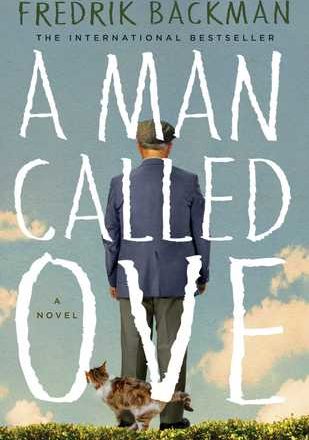Review: ‘A Man Called Ove’
- Share
- Tweet
- Pin
- Share

In the interest of full disclosure I will admit that on occasion I have been characterized as a grumpy old man, perhaps deservedly. And my ancestral DNA results revealed that I am 48 percent Scandinavian. Subsequently, I cannot be regarded as completely objective when I add my praise to A Man Called Ove by Swedish author Fredrik Backman, a novel that has enjoyed international bestseller status.
Backman admittedly has employed formulaic devices in creating his central character and developing his plot, but he has done so with effective results, just as a skillful cook tweaks recipes to advantage and everyone enjoys the meal.
At age 59 Ove is a consummately grumpy old man, but the reader nonetheless finds him charismatic. First, because his life has been filled with disappointments and sadness, he is to be forgiven for his grouchiness. And second, beneath his gruff exterior lies a kind heart.
Young Ove had lost both of his parents by age 16 and was forced to drop out of school to support himself, taking over the railroad job held by his late father and fulfilling his duties not only competently, but with a sense of honor, a personality trait that follows him throughout his life, despite his crotchety nature.
Backman’s storytelling moves fluidly between the present and the past, offering foreshadowing followed by revelations. Episodes from the past define his character, his work ethic, his romance with the girl he marries, his self-sufficiency, and his battles with bureaucracy.
The plot line of the present reveals his loneliness, his overwhelming sense of loss, and his attempts to escape his despondency.
One of the delights of the novel is the cast of characters who surround Ove and despite his resistance to them, become a part of his life. A disreputable cat that he loathes; a neighboring family that includes a bumbling IT professional, his Iranian wife and two young daughters; an old man once his best friend, now his longtime enemy; an overweight young man, a gay son rejected by his father, a former special-needs student once taught by Ove’s wife – in short, a cross-section of modern society that engulfs a lonely grumpy old man despite his efforts to reject them. Ultimately they help him to become reintegrated into his community and to achieve a sense of purpose.
Another pleasure for the readers is observing Ove’s unfiltered battles with bureaucrats. All of us have ground our teeth in frustration at the unspooling of red tape and a one-size-fits-all response to a unique problem. While Ove does not possess the secret for dealing with faceless foes, we nonetheless enjoy watching him unsettle his opposition as he butts his head against their firewalls.
One delightful scene among Ove’s often politically incorrect exploits occurs when he deals effectively with road rudeness. As he is giving his Iranian neighbor a driving lesson, a man behind honks unceasingly on his horn. Ove responds by opening the door of the offending vehicle, and half-yanking the driver from his seat while explaining the grievous nature of his offense. Those of us who have been irritated by the thoughtless behavior of fellow drivers find Ove’s response highly satisfying.
Even readers who are not themselves curmudgeons – or may not have grumpy old men in their families – will enjoy the universal themes that emerge from the pages of the novel. And the highly readable translation by Henning Koch adds to the pleasure.
One criticism of the translation is that the text has been Anglicized to the point that with the exception of occasional references to kronors and to an implied socialistic society, the book could be set in the United States. Swedish culture has been all but obliterated from the narrative.
And a minor criticism regards Ove’s meticulous plan for installing a hook in the ceiling to hang something, uh, of considerable weight. His priority is finding the exact center of the room to make the installation, while in reality a man with Ove’s purported carpentry skills would realize that more important is the location of a ceiling joist, or the hook would fail to hold. (But feel free to disregard my observation as the grumblings of a grouchy old man.)
Based on the novel, the film A Man Called Ove is readily available on DVD. As the dialog is in Swedish with English subtitles, the story has a strong sense of place.
A Man Called Ove by Fredrik Backman / 337 pages, Washington Square Press, 2015



